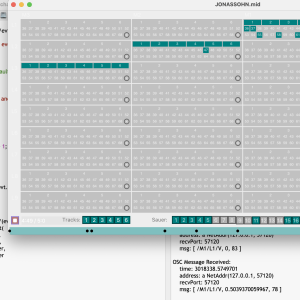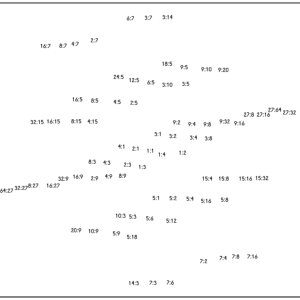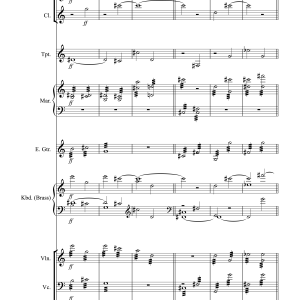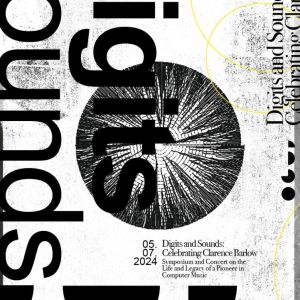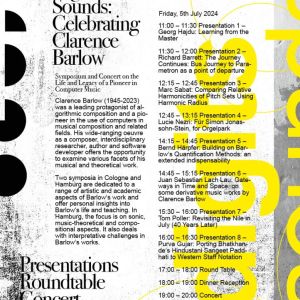Für Simon-Jonassohn Stein for Orgelpark
for two programmable organs — 5'00" — 2024
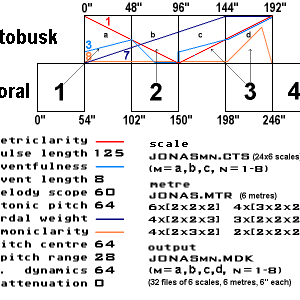
Für Simon Jonassohn-Stein is a fascinating work originally composed in 2012 by Clarence Barlow for the programmable organ of the Saint-Peter Church in Cologne. this short, 5-minute piece is derived from Bach's chorale Zeucht ein zu deinen Toren (“Oh enter, Lord, thy temple”) but does not attempt to re-create its style. rather, in the words of the composer, the piece oscillates between the 'vaguely familiar' and the 'unexpected'. importantly, the piece subsumes Barlow's algorithmic model of chorale synthesis based on mathematics, specifically on algebra and geometry. although the piece is in equal temperament, it follows questions related to harmony and rational intonation, something that ends up coloring the piece very much in my opinion. later on, another version of the piece was written for the ensemble Modelo62.
for the second edition of Echonance Festival, i was commissioned to write a new version of the piece for the two programmable organs at Orgelpark, Amsterdam. this project ended up being very extensive and i'm glad i got to know the piece so intimately. although Clarence wrote a paper on his compositional methods for the piece, there was no documentation found anywhere detailing how he played his MIDI files on the organ at the Saint-Peters Church, i.e. which registers he used or if he used other effects like changes in air pressure and so on. many aspects of the project were involevd: analysis of the MIDI file, listening to the two existing versions of the piece, translating the MIDI files into a comprehensive SuperCollider patch sending OSC messages straight to the two organs, along with changes in registrations, and of course, trying to find the right registrations for the new version of the piece. i've made several versions for the two organs at Orgelpark, following different logics: staying as close as possible to the original organ version, combining the organ and ensemble versions, imagining other versions following the overall structure of the piece or simply experiments i wanted to try — and mostly, imagining what would have been the most satisfying result for Clarence Barlow. in the end, it was all a 'speculative' and interesting exercise.
similar to the reconstruction of James Tenney's Arbor Vitae for sine tones, this project would not have been possible (and not as fun) without my collaborator Andrea Vogrig. i'm also thankful for the additional and precious support of Claudio Baroni/Echonance Festival, Michael Winter, and Trevor Grahal.
for more information about the piece, visit Clarence Barlow's website and read his paper Chorale Synthesis by the Multidimensional Scaling of Pitches.
a short presentation about the project was given at the ligeti zentrum during a symposium celebrate Clarence Barlow, which is fully available online

